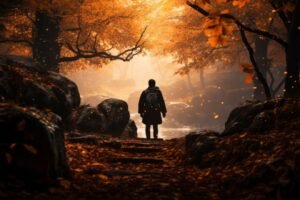An Odyssey Through Literature: 50 Books to Read Before You Rest

Introduction:
Books to read are not only stores of words; they are doors to new universes, conductors to the past, and windows to what’s to come. In the immense scene of writing, there exists an overflow of fortunes ready to be found. Whether you are a devoted peruse or somebody simply starting to investigate the domain of story books, there are certain titles that stick out, immortal works of art, and contemporary magnum opuses that improve the brain and soul.
This article is an odyssey through composition, an outing remembering 50 groundbreaking books to read that merit a put for everyone’s figuring out summary. From the mind blowing accounts of old-fashioned improvements to the intelligent records of current life, these story books offer huge encounters, mixing sentiments, and endless premiums. Thusly, let us leave on this insightful excursion together, and may each page turn convey us closer to brightening and understanding.
“To Kill a Mockingbird” by Harper Lee:
Harper Lee’s Pulitzer Prize-winning novel is a strong depiction of racial treachery and moral development in the American South. Through the eyes of youthful Scout Finch, pursuers witness the preliminary of Tom Robinson, an individual of color erroneously blamed for assaulting a white lady, and the peaceful valor of her dad, legal counselor Atticus Finch. With grace and compassion, “To Kill A Mockingbird” confronts the complexities of human nature and challenges societal norms.
“1984” by George Orwell:
The startlingly tragic book story “1984” by George Orwell portrays a general public where singularity is stifled and the ubiquitous Party controls reality. Orwell investigates subjects of observation, misleading publicity, and the force of language to shape reality through the resistance of Winston Smith, the hero, against the harsh system driven by an older sibling. “1984” stays an immortal admonition against the risks of tyranny and the disintegration of opportunity.
“The Great Gatsby” by F. Scott Fitzgerald:

- Scott Fitzgerald’s Jazz Age model, “The Exceptional Gatsby,” gets the appeal and confusion of the Quest for Satisfaction during the 1920s. The novel, as narrated by Scratch Caraways, follows Jay Gatsby’s cryptic quest for love and wealth alongside discussions of social class, personality, and the adulterating effects of money. With its expressive composition and tragic resonation, “The Unique story books” continues to fascinate followers with its examination of want and excess.
“Pride and Prejudice” by Jane Austen:
Jane Austen’s appreciated farce of propensities, “Pride and Predisposition,” remains a godlike story book of reverence, marriage, and social suspicions in mid-nineteenth century England. Through the lively top dog Elizabeth Bennet and the satisfied Mr. Darcy Austen investigates the intricacies of class inclination and mindfulness, getting done with a magnificent examination of the historic power of warmth. “Pride and Bias” is as yet viewed as a fundamental work of English writing because of its sharp mind and sagacious social editorial.
“Moby-Dick” by Herman Melville:
Herman Melville’s staggering book, “Moby-Dick,” is a meandering aimlessly experience of obsession, retaliation, and the fundamental powers of nature. The story book, which is described by the mariner Ishmael, is about Commander Ahab’s intense quest for the tricky white whale Moby Dick, which prompts a startling experience with the constraints of human desire and the secrets of the ocean. “Moby-Dick” is a huge examination of existential subjects and the complexities of the human brain, commended for its magnificent language and philosophical significance.
“The Catcher in the Rye” by J.D. Salinger:
J.D. Salinger’s fundamental books to read, “The Catcher in the Rye,” offers an unfiltered look into the brain of baffled teen Holden Caulfield as he explores the intricacies of puberty and cultural similarity. Through Holden’s pessimistic yet weak portrayal, Salinger catches the distance and longing for validness that characterize the young experience, reverberating with pursuers across ages. The story of a young person struggling to find meaning in a world full of fakes, “The Catcher in The Rye,” has been around for a long time.
“One Hundred Years of Solitude” by Gabriel García Márquez:

Gabriel Garca Márquez’s work of art, “100 Years of Isolation,” is a broad adventure of affection, enchantment, and the recurrent idea of history in the made up town of Macondo. Through the multi-generational story book of the Buenda family, Garca Márquez investigates topics of destiny, memory, and certain examples of human life. With its lavish writing and visionary narrating, “100 Years of Isolation” is an extraordinary work of mystical authenticity that keeps on enamoring pursuers with its significant investigation of the Latin American experience.
“The Lord of the Rings” by J.R.R. Tolkien:
J.R.R. Tolkien’s legendary dream set of three, “The Ruler of the Rings,” is an immortal story book of fortitude, kinship, and the fight among great and fiendish in the legendary place that is known as Center Earth. Through the excursion of Frodo Baggins and his allies to obliterate the One Ring, Tolkien makes a lavishly envisioned world populated by mythical people, dwarves, wizards, and dull powers twisted on mastery. “The Ruler of the Rings” is a magnum opus of world-building and narrating, respected for its incredible extension and getting through subjects of courage and penance.
“Crime and Punishment” by Fyodor Dostoevsky:

Fyodor Dostoevsky’s mental Books to read , “Terrible Way of Behaving and Discipline,” jumps into the ethical issues and existential tension of the tortured understudy Raskolnikov, who finishes a wrongdoing to test his hypothesis of the “outstanding man.” In Petersburg, the original’s themes of responsibility, reclamation, and the search for significance are examined against the backdrop of Saint in a world devoid of absolutes. Dostoevsky’s difficult assessment of the human condition keeps on charming devotees with its basic experiences with the chance of a terrible way of behaving and salvation.
“The Odyssey” by Homer:
The epic poem “The Odyssey” by Homer tells the timeless tale of heroism, adventure, and the return journey. Odysseus, the clever hero of the story books, makes his ten-year journey back to Ithaca through Gods, monsters, and temptations in the aftermath of the Trojan War. “The Odyssey” isn’t simply a holding experience; it is likewise a critical thought on fate, character, and the persisting power of the human spirit to prevail upon disaster. Homer’s everlasting legend continues to reverberate with users for its ever-enduring subjects and undying knowledge.
Conclusion:
As we arrive at the end of our scholarly odyssey, we are helped to remember the huge lavishness and variety of the universe of books. Each of the fifty books discussed in this story books offers a distinct perspective on the human experience and invites readers on journeys of imagination, insight, and self-discovery. These journeys range from Homer’s ancient epics to Virginia Woolf’s modernist masterpieces.
Through the pages of these immortal works of art and contemporary pearls, we have navigated scenes of affection and misfortune, investigated the profundities of human inclination, and wrestled with the central inquiries that characterize our reality. We have experienced legends and champions, bad guys and visionaries, each offering a brief look into the intricacy and excellence of the human spirit.



